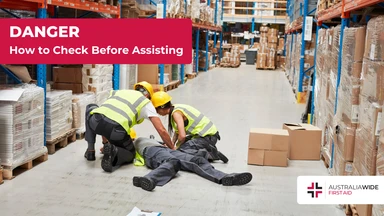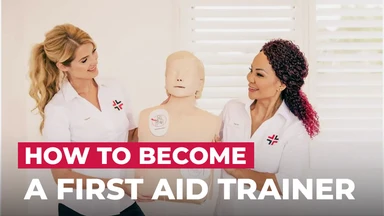First Aid in Disabled and Aged Care


After all, we’re talking about care for some of the most vulnerable people in our community. And care for those with special needs are complex, often involving mental health as well as physical health.
Despite being in a care situation, sadly, many of these vulnerable people suffer neglect. This happened recently to an Adelaide woman with cerebral palsy who was left to die without adequate care or medical support.
As a leading provider of CPR and First Aid courses — not just for health care professionals and carers, but for all who understand how vital it is to be prepared — we want to highlight some of the more important aspects of providing First Aid for aged and disabled people.
Being aware of these points helps to avoid further complications and leads to the quality of care that is needed for our more vulnerable people.
Healthcare professionals, including aged and disability workers, are bound by a duty of care to maintain the health and well-being of those they support or assist medically. And really, who would want it any other way?
This is a moral and legal obligation. Failure to meet those obligations and breaching that duty of care could result in legal consequences.
The DRSABCD action plan applies to Disability First Aid just as it does for traditional First Aid. The DRSABCD acronym unpacks as follows:
Danger: You first need to check if you, the patient, or any bystanders are in harm’s way. You may find yourself needing to remove both patient and yourself to safer surrounds. You should provide First Aid only when the coast is clear.
Response: Check that the person is conscious and responsive. Try to communicate with them. Touch their hands or their shoulder.
Send for help: Call emergency services on 000.
Airway: If the person is unresponsive and unconscious, check their airway by opening their mouth and looking inside. If the airway is not clear, place the person gently on their side. Clear any obstruction to the airway, before checking again to see if they are breathing. If they are conscious, responding to your queries, and have a clear airway, identify the best way to assist them with their injury.
Breathing: Assess whether the person is breathing by looking for chest movement, placing your ear near their airways, and touching the lower part of their chest. If they are breathing but unconscious, lie them gently on their side and monitor their breathing until emergency support arrives.
CPR: If the victim is unconscious and not breathing, lie them on their back and commence CPR — 30 compressions on the centre of their chest and 2 breaths. Continue until emergency services arrive.
Defibrillator: For victims who are unconscious and not breathing, you can also use an AED (automated external defibrillator). You may need the help of someone in the vicinity to retrieve one from any likely, nearby location. Many workplaces have defibrillators as part of their First Aid equipment. Follow the prompts on the AED. It will direct you as to where to apply the pads and when to start delivering the electric shock. Make absolutely sure before delivering the shock, that no one is touching the patient and that conductive materials, including liquids, have no chance of endangering anyone nearby from the AED’s high voltages.
Additional First Aid skills are required for those who specialise in Disability First Aid:
The skills listed above — combined with traditional elements of First Aid, including DRSABCD — contribute to safer and more successful outcomes for people with special needs.
To work as a disability or aged carer, it is a requirement that you hold current certification in First Aid and CPR.
At Australia Wide First Aid, we don't currently provide a Disability First Aid course. We do, however, offer First Aid courses designed to streamline the learning process. You simply do all your theory work online and finish off with a short face-to-face practical session to lock in skills that will then allow you to respond appropriately for all types of medical emergencies.
Your First Aid Statement of Attainment comes through shortly after successful completion direct to your email InBox. And it’s a certificate that is recognised Australia-wide.
Read more about our First Aid courses.

March 18, 2025
Checking for a response is critical before proceeding with any first aid assistance. Knowing if a casualty is conscious or not allows you to use the appropriate techniques. Using gentle but firm responsiveness techniques, such as the COWS method, mean you can check for a response while remaining respectful to the casualty.

February 25, 2025
When coming across someone who appears unconscious, injured, or in need of medical help, it’s instinctive to rush to their aid. Ensuring the scene is safe before assisting the person is not only a fundamental principle of first aid but also critical to preventing further harm.

March 8, 2024
Becoming a first aid trainer in Australia is a rewarding and impactful career choice that allows individuals to make a significant contribution to the community by imparting life-saving skills.